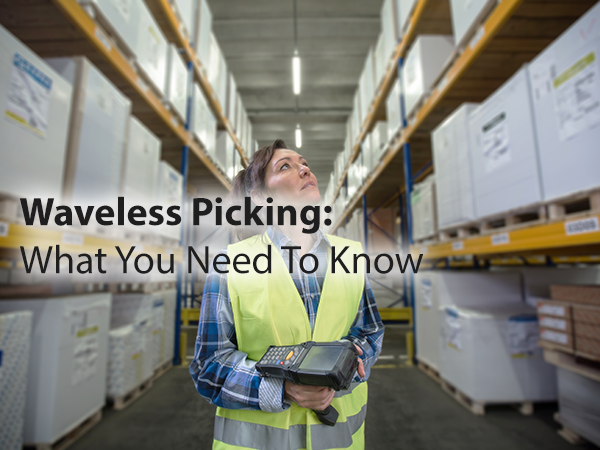Waveless picking can speed up your order fulfilment, allowing you to quickly get orders out of the door and delivered to your customers.
Rapid turnaround times can help all manner of retailers, distributors and third-party logistics providers to meet ever more demanding customer expectations. Consumers have long been treated to next-day and same-day deliveries by Amazon, thanks to its Prime service. So this is now the benchmark and customer expectations are high.
Waveless picking can help you to compete with the likes of Amazon and to offer – and meet – next day delivery promises.
What is Waveless Picking?
With waveless picking, you don’t wait to receive a certain number of orders and then “wave” them. Instead, they go directly to the warehouse as they are received, so that they can be picked almost immediately.
In this way, your warehouse operatives are always working. They can be carrying out a replenishment task or undertaking a cycle count. Then, when an order comes in, it’s threaded into their workflow. This is done via a process called task interleaving and can be communicated to them via their scanning guns.
The Benefits and Drawbacks of Waveless Picking
The dynamic assignment of tasks can allow a warehouse to work more efficiently. It makes your operation far more customer-centric and responsive. Instead of batching orders up and then picking and packing them for despatch, waveless picking gives a more fluid and flexible operation. It aligns staff and equipment availability in real-time, meaning orders can be fulfilled quickly and efficiently.
However, travel time is often not as short as with wave picking, where a batch of orders with the same SKUs, or that are located near to each other, can be picked consecutively. Although the overall operative travel time may be increased with waveless picking, it needs to be balanced with the need to get the order despatched as soon as possible.
What types of operation suit waveless picking?
High volume ecommerce operations really benefit from using waveless picking. Around-the-clock despatch using waveless picking prevents any peaks and troughs in workload and allows you to despatch orders continuously. If you offer next day or two-day delivery, then you maybe can’t afford to wait several hours for a batch of orders to be sent to the warehouse for picking, because you may miss a delivery window during that time.
Omni-channel set-ups, which have ecommerce, retail and wholesale arms may need to operate both wave and waveless picking within the same warehouse. The ecommerce orders may rely most on waveless picking, with orders for despatch to retail outlets or wholesalers being picked in waves.
Is waveless picking right for you?
Rapid order fulfilment is a priority for all ecommerce operations. Your customers expect to receive their deliveries quickly and so your workflows need to adjust to meet their demands.
If you have a continuous flow of orders, then you should at least simulate a waveless picking method. A simulation would help you understand if waveless is the right way forward for your warehouse.
For more information on picking methods – or if you would like to chat through how our warehouse consultancy services can help you assess your operations – call us on 020 8819 9071 or get in touch.
